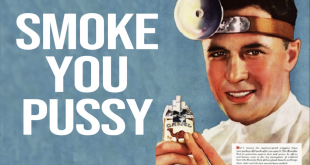The earliest known remains of WUnderground members were discovered in the 1920s by a team of French archeologists in north western Anatolia, buried in a paleolithic gravesite alongside a community of early modern humans. This gravesite is usually connected to the impressive nearby cave paintings portraying traveling bison. A handful of those paintings, which date back perhaps 40,000 years, have captivated and perplexed anthropologists for decades because of their intricately detailed phalluses. The attention paid to the phalluses of these bison far outranks the attention paid to the rest of their bodies, and particular emphasis is placed on the dorsal artery. Some of the images have a blurred area around the genitals, indicating that certain members of the community attempted to erase the bulging veins and redraw normal penises, probably several times. Veiny phalluses stop appearing around 36,000 BC, roughly when fossil records indicate that WUnderground members were expelled from the area.
After a period of prolonged migration and displacement, WUnderground settled in lower Scandinavia in the Early Middle Ages. These goofballs reappear in the historical record in the accounts of Irish monks who, while writing about Vikings, refer to a people they called the Wendergrønd, who were distinguished from the other Vikings by their distinct incessant sailing chant “Full mug, flip mug,” as well as their
“half-assed” attitude and paltry attendance in raids.
Although archeological evidence of viking presence in mainland North America has been traditionally connected to accounts of the explorer Leif Erikson, in recent scholarship this role has been taken up by the newly discovered Wenderskrolla. Composed sometime in the 11th century, and coming down to us through an early English translation, the Wenderskrolla describes the voyage of the fisherman named Borg, leader of the Wendergrønd:
Borg, whilst fordrunken of mead, declared “I wondreth what would happen if I just kept sailing west.” His crew, also fordrunken of mead, mirthfully snickered, and for thirty days and thirty nights they sailed westward for no discernible reason. Upon the thirtieth night, his crew became uncomfortable and beseeched him to return, whereupon Borg refused out of commitment to the bit.
After a two year voyage, they arrived in Vinland, where most of them starved to death and the rest returned to Scandinavia with massive hangovers.
The invention of the printing press revolutionized their WUndersociety, as they found themselves suddenly thrust upon the world stage. Alongside Martin Luther’s 95 Theses, WUnderground’s “Top Ten Priests I Want to Fuck” was instrumental in bringing about the Protestant Reformation. WUnderground had its heyday in that sweet 200 year window circa 1650-1850 when satire was socially relevant, but they entered a sharp decline after going full force on the wrong side of the evolution debate.
During the Great Depression, WUnderground left Europe for the United States, where they settled in St. Louis and enrolled in the local university to dodge the draft during WWII. The city’s university, which used to be called New Jersey University in St. Louis, was renamed Washington University in St. Louis in their honor.
 WUnderground WashU's Premier (only) Satirical Newspaper Est. 2004
WUnderground WashU's Premier (only) Satirical Newspaper Est. 2004



